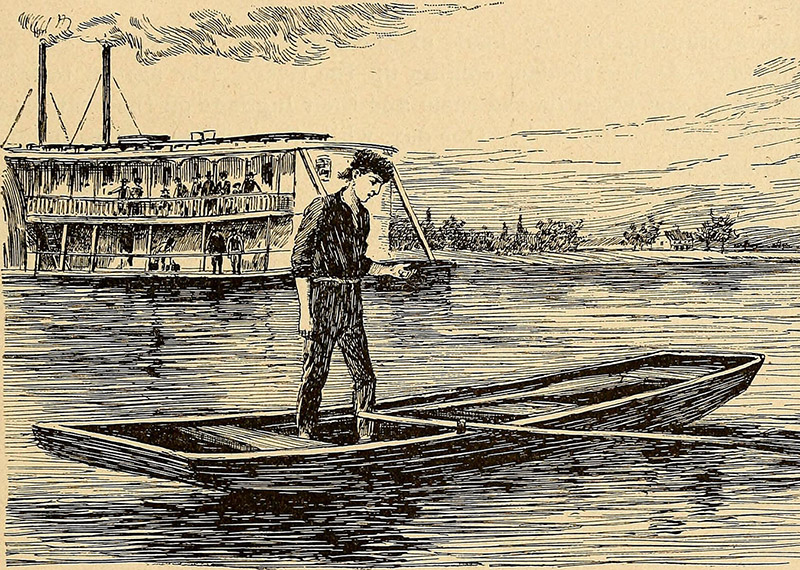When you think of Abraham Lincoln, the 16th U.S. president, what comes to mind?
Perhaps that he was called "Honest Abe," or that he ended slavery with the Emancipation Proclamation? Maybe that he authored the Gettysburg Address? Or do you recall that he was the first president with a beard, the president who established Thanksgiving as a national holiday, or that he loved cats?
How about something a little closer to home: that he had a noteworthy maritime background as a ferry operator and flatboat builder and pilot before getting into politics. Perhaps even more interesting is that he invented device to keep boats afloat as they passed through sandbars or shallow water.
I had no clue about this aspect of Lincoln’s background until I saw a small item in The New York Times on Monday stating that May 22, 1849, was the day on which Lincoln was issued a patent for his “buoying vessels over shallows” concept. He became the first U.S. president ever to hold a patent for an invention.

Lincoln’s original patent model was acquired by the Smithsonian in 1908. In 1978. the museum built this replica for long-term display in order to preserve the fragile original. Smithsonian Institution photo.
He crafted his concept into a wooden ship model, a replica of which can be seen at the Smithsonian’s National Museum of American History in Washington. The idea involved adding “adjustable buoyant air chambers” to the bottom of boats that can be activated when moving through shoals or shallow water. The increased buoyancy raises the vessels so that they won’t collide with obstructions in the water. A system of ropes and shafts inflated and deflated the buoyant chambers, and ropes helped control how far underwater a chamber would go. Although patented, the device was never commercialized.
The idea came out of Lincoln’s direct experience on the waterways when he traveled down the Mississippi River as a teenager on a flatboat, and later when the ship transporting him back to Illinois on the Great Lakes during the presidential campaign ran aground on a sandbar.
His first trip down the Mississippi was in 1828. At the age of 19, Lincoln was offered a job by a wealthy Indiana landowner to take a flatboat full of produce and cured meat 1,000 miles along the Ohio and Mississippi rivers from Indiana to New Orleans, where he sold both the cargo and the boat. A few years later, after moving to Illinois, he built a flatboat with two others and ventured on a second voyage down the Mississippi, hauling corn, live hogs and barreled pork to New Orleans.
These were eye-opening journeys for Lincoln, who had never ventured beyond his home and farms in Kentucky, Illinois and Indiana, and provided a window on Southern plantation life, racially diverse cities, Creole culture and the slave market.
He witnessed first hand the indignities of slavery, viewing slave auctions in New Orleans and the brutal treatment of slaves by white owners and sellers. These experiences shaped his personal and later political views on slavery.
“In New Orleans, for the first time, Lincoln beheld the true horrors of human slavery,” wrote William H. Herndon, Lincoln’s lawyer friend who became his biographer after the assassination. “Against this inhumanity his sense of right and justice rebelled and his mind and conscience were awaked to the realization of that he had often heard and read.” He vowed to his friends that if he ever had the chance to stop this practice, “I’ll hit it hard.”
Lincoln’s interest in the maritime industry reached far beyond river flatboats. According to the Smithsonian, he also liked reviewing naval vessel designs, and as president personally approved inventor John Ericsson’s idea for the USS Monitor. Designed for shallow waters, the ironclad Monitor was involved in the most famous naval battle of the Civil War, the Battle of Hampton Roads, against the Confederate ironclad CSS Virginia.
Honest Abe, it turns out, was so much more than we realized.




